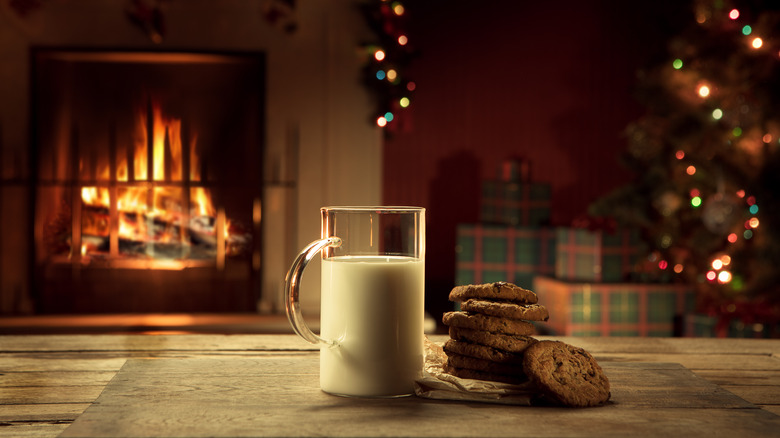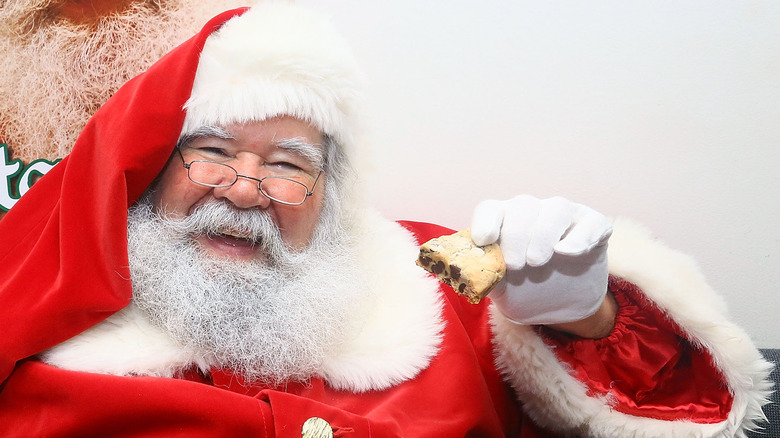The History Of Leaving Cookies And Milk For Santa Explained
There are many reasons why Christmas is the most magical time of year: the festive decorations; the hearty food; the thoughtful presents; the quality time we spend catching up with friends and family. And, of course, for kids it's even more magical, with the promise that Santa's sleigh bells will soon be heard and the jolly old man will defy the laws of space and time and sneak down everyone's chimneys to deliver much-deserved toys for boys and girls the world over ... as long as they've been good, of course.
But it's not just the presents under the tree that cement the truth of Santa's magical powers every Christmas morning: it's the fact that he takes the time to enjoy the presents that are left for him in return. As everyone knows, leave some cookies and a glass of milk out for Santa on Christmas Eve and it's a surefire certainty that he'll indulge.
But who first came up with the idea?
A magical offering
According to the food writer Sarah Daniels, the act of leaving milk and cookies for Santa Claus on Christmas Eve is part of a long European tradition of offering gifts to magical figures, which was subsequently adopted in American society taking cues from Germanic Christmas rituals (via Kitchn). For example, Daniels notes that in Norse society children were encouraged to leave gifts of hay for the mythical creature Sleipnir, the eight-legged steed of Odin, king of the Norse gods.
Daniels explains that the figure of Santa Claus derives from that of St. Nicholas, traditionally celebrated in The Netherlands with a feast on his Saint Day, December 6. Such feasts were undertaken to mark the importance of generosity, and children who were told to go to bed before the arrival of travelers to the festivities would leave gifts for the latecomers, while, according to the St. Nicholas Center, the tradition of nuns leaving gifts for children of poorer families goes back to the 12th century.
Daniels also claims that the idea that Santa is a sneaky snacker may have arisen from the fact that in Germany, traditional Christmas decorations were edible. Such objects often became midnight meals for mice and rats, and Daniels explains their going missing may have been attributed to the jolly saint.

